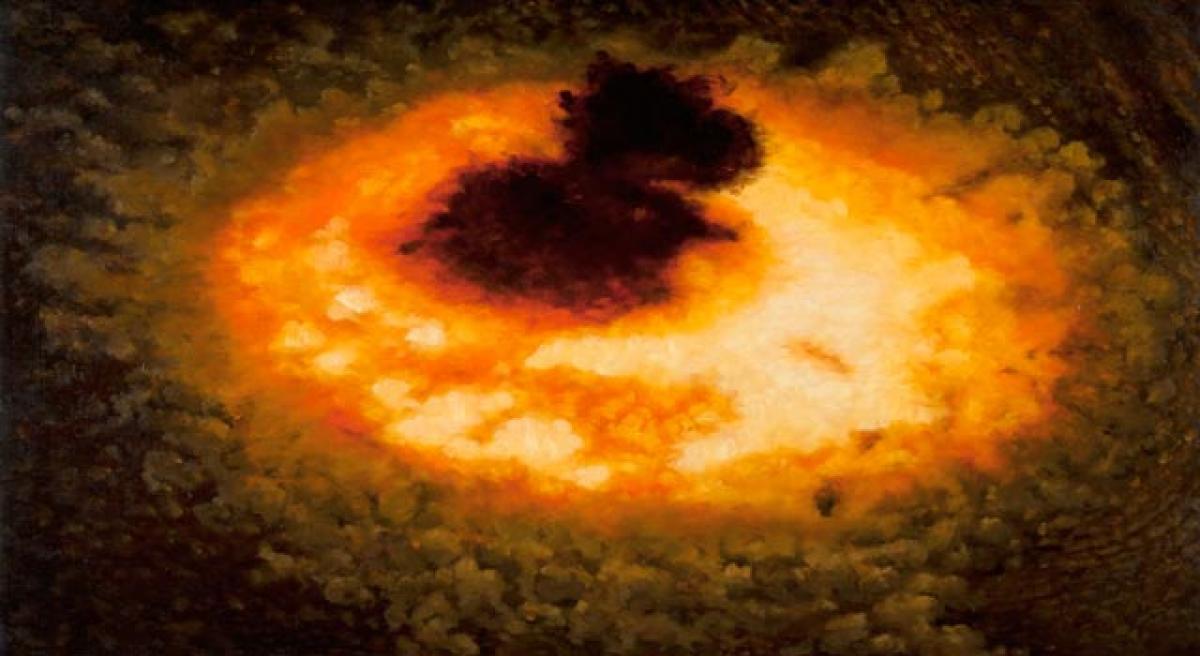Live
- Metro to sell Trade Fair tickets at 55 stations
- Revise income limit for EWS admissions in pvt schools to `5 lakh: LG
- MCD mayoral election today: Satya reappointed as presiding officer
- Don’t fall in trap of drug addiction, youths cautioned
- Air Pollution Crisis: LG approves redeployment of Civil Defence volunteers
- Delhi police orders checking of hotels to nab criminals
- Kavya seeks people’s support for development of district
- Leaders remember People’s poet Kaloji
- BJP’s win shows people back corruption-free govt: Dattatreya
- UP: SC’s demolition verdict will help curb organised crime
Just In

The big news emerging from the United States is that, as per reports, US forces dropped the military\'s largest non-nuclear bomb on what it said was an Islamic State (IS) cave complex in remote Afghanistan (Achin district in Nangarhar province) on Thursday.
The big news emerging from the United States is that, as per reports, US forces dropped the military's largest non-nuclear bomb on what it said was an Islamic State (IS) cave complex in remote Afghanistan (Achin district in Nangarhar province) on Thursday.
The bomb, GBU-43/B Massive Ordnance Air Blast (MOAB), can reportedly obliterate everything within a 1,000-yard radius and is being termed as the "mother of all bombs." The weapon called the GBU-43/B Massive Ordnance Air Blast was dropped from a Lockheed Martin MC-130 belonging to U.S. Air Force Special Operations command.
The Pentagon has not released any specific details about the air strike, but the use of the GBU-43 suggests a very significant network of tunnels. The GBU-43 is a 22,600lbs weapon with 18,700lbs of H-6 explosive filler is an inertially guided weapon that relies on GPS course corrections just like the JDAM series weapons.
When the GBU-43/B was originally developed, it was the most powerful non-nuclear bomb ever built but has been surpassed by other weapons. “The GBU-43/B Massive Ordnance Air Blast (MOAB pronounced (commonly known as the Mother of All Bombs) is a large-yield conventional (non-nuclear) bomb, developed for the United States,” the U.S. Air Force Armament Museum states on its site.
“At the time of development, it was touted as the most powerful non-nuclear weapon ever designed.” The GBU-43/B is not a penetrating weapon and is generally intended for use against softer targets in confined spaces such as caves or canyons. In other words it’s perfect for use against concentrations of insurgent fighters in Afghanistan.
While many media sources tout the GBU-43/B as the largest conventional bomb ever built, it’s not really the case. The U.S. Air Force also fields the GBU-57A/B Massive Ordnance Penetrator (MOP), which is a massive precision-guided 30,000lb bunker-busting weapon that is usually dropped from a Northrop Grumman B-2 Spirit stealth bomber. However, the GBU-57A/B only contains 5,300lbs of explosive filler the vast bulk of the weapon comes from the hardened casing, according to http://nationalinterest.org.
The MOAB has been claimed to be the largest conventional bomb ever used in combat after being deployed in Afghanistan on 13 April 2017, but the 22,000 pound Grand Slam earthquake bombs dropped during World War II may have been even heavier. In 2007, Russia tested a thermobaric weapon nicknamed the "Father of All Bombs"; the weapon is claimed to be four times as powerful as the MOAB.

© 2024 Hyderabad Media House Limited/The Hans India. All rights reserved. Powered by hocalwire.com







